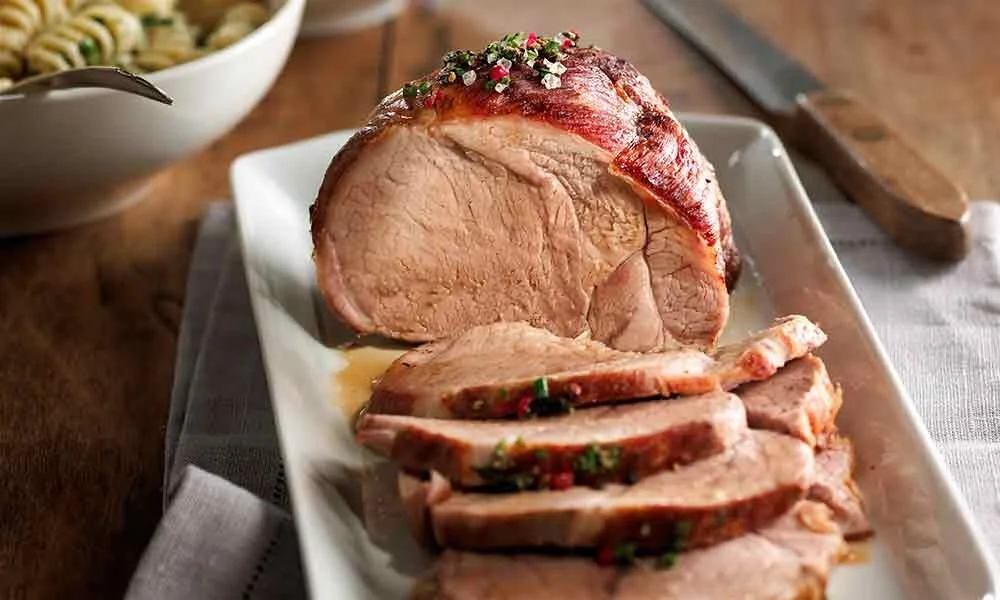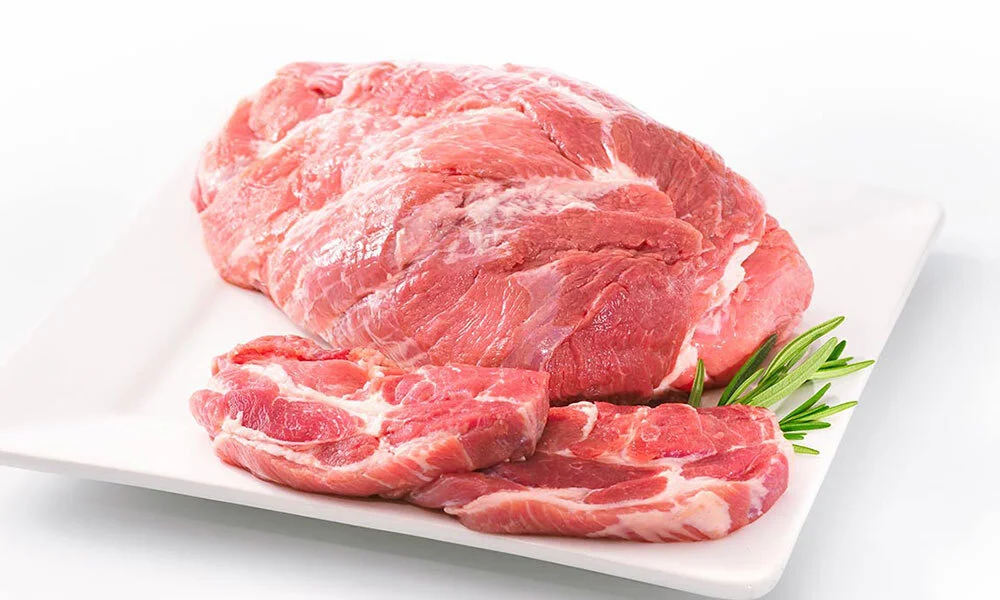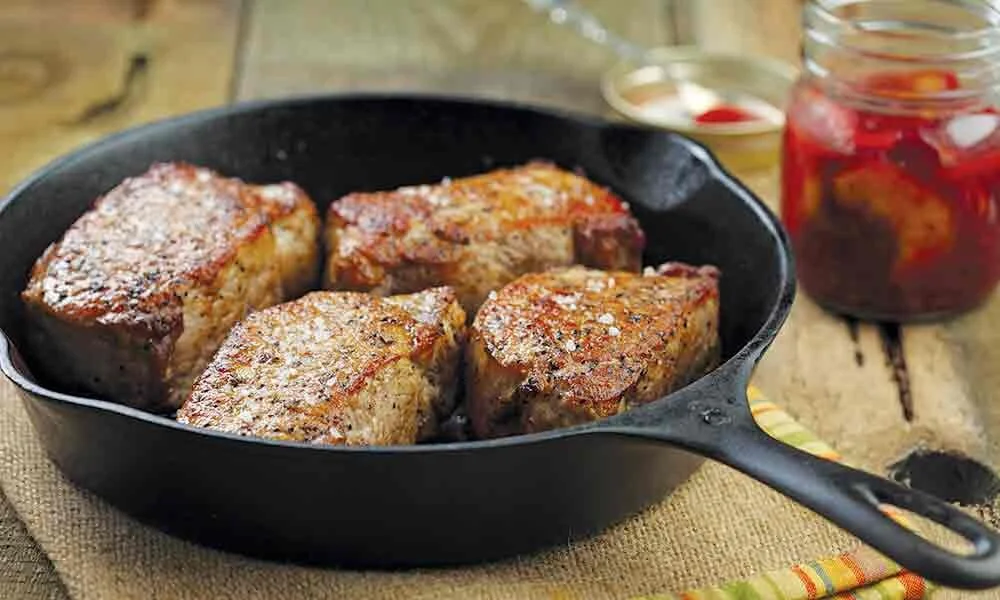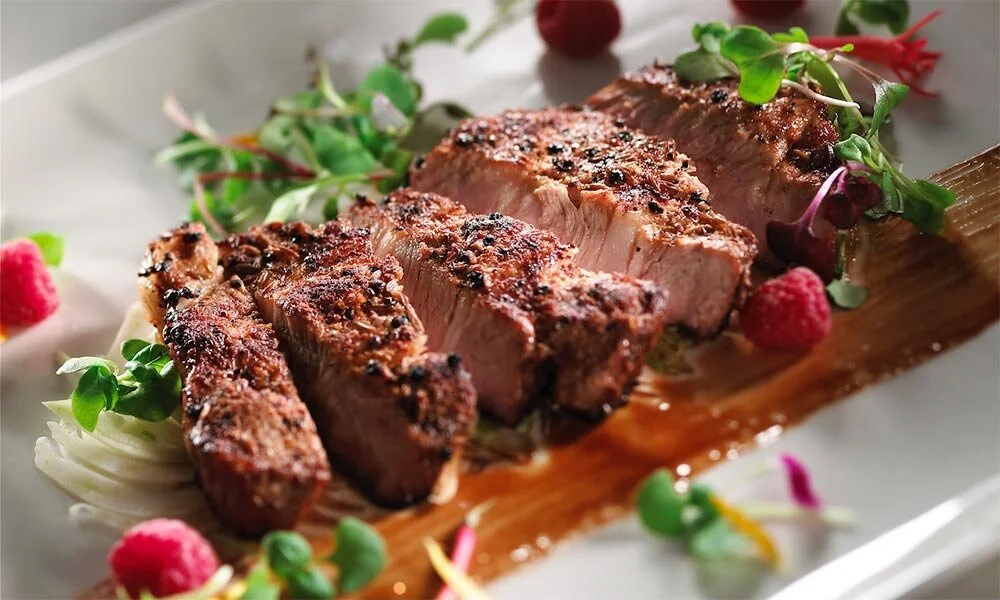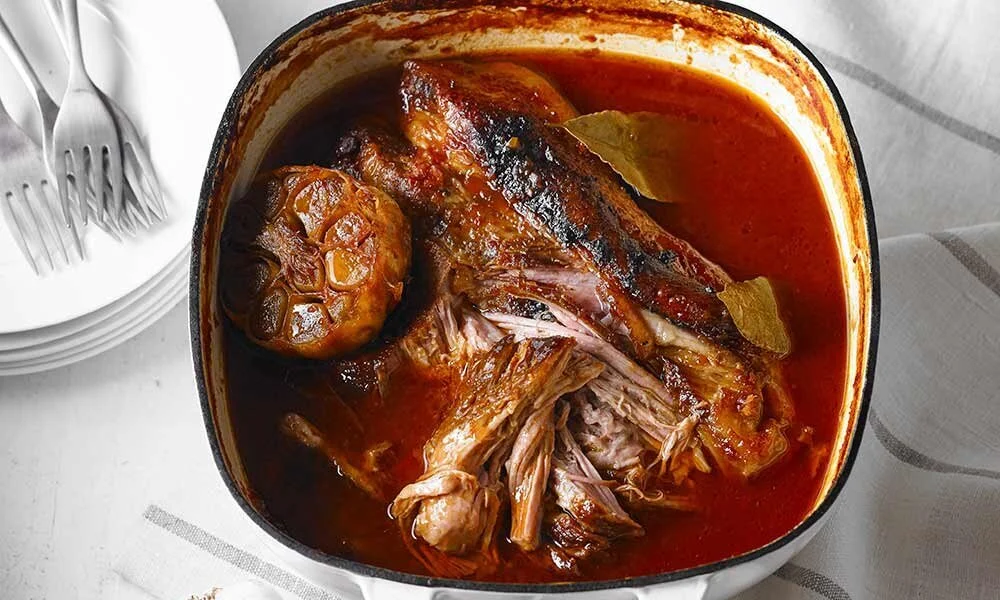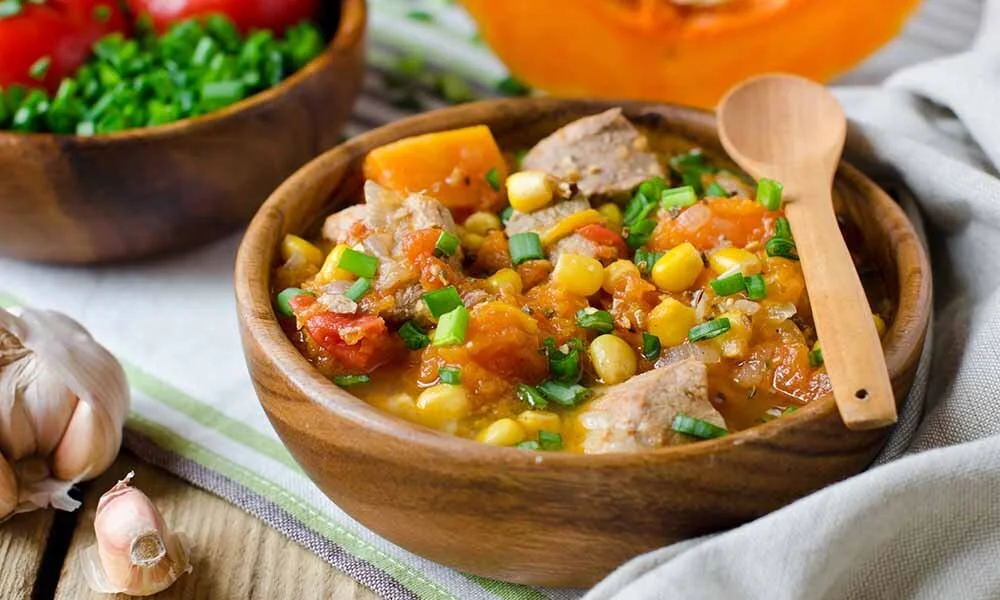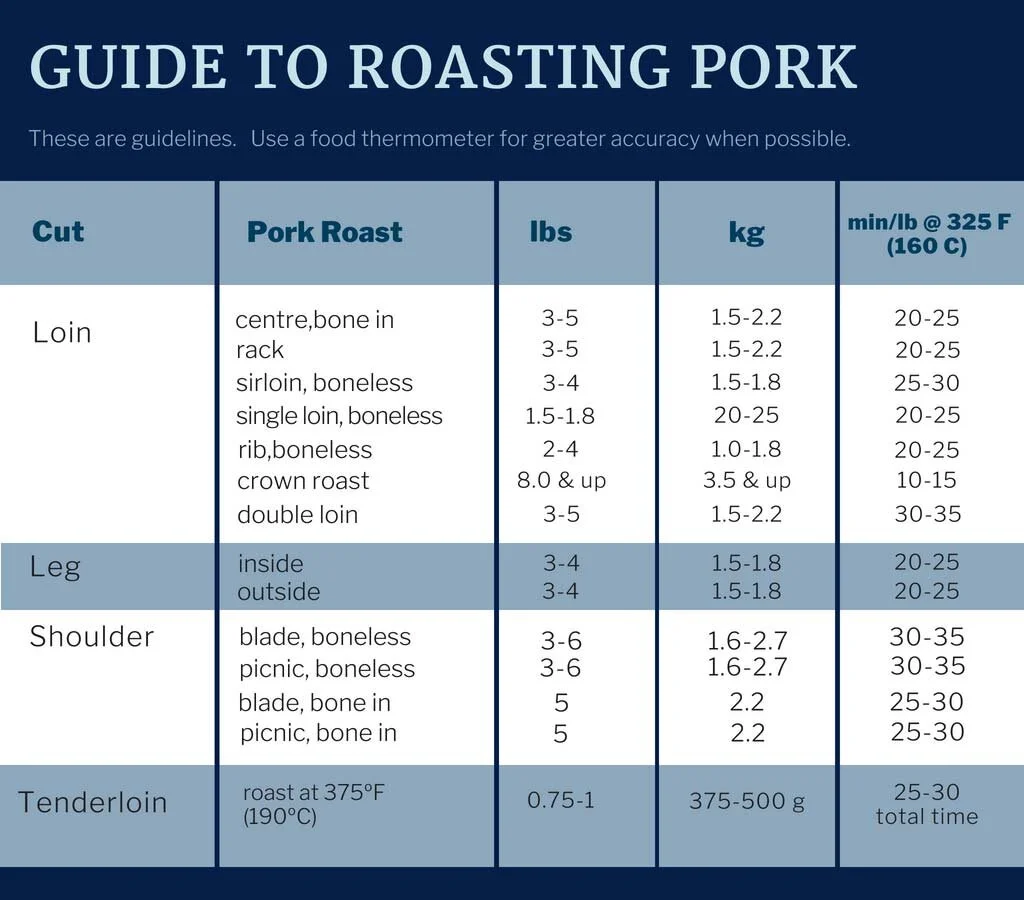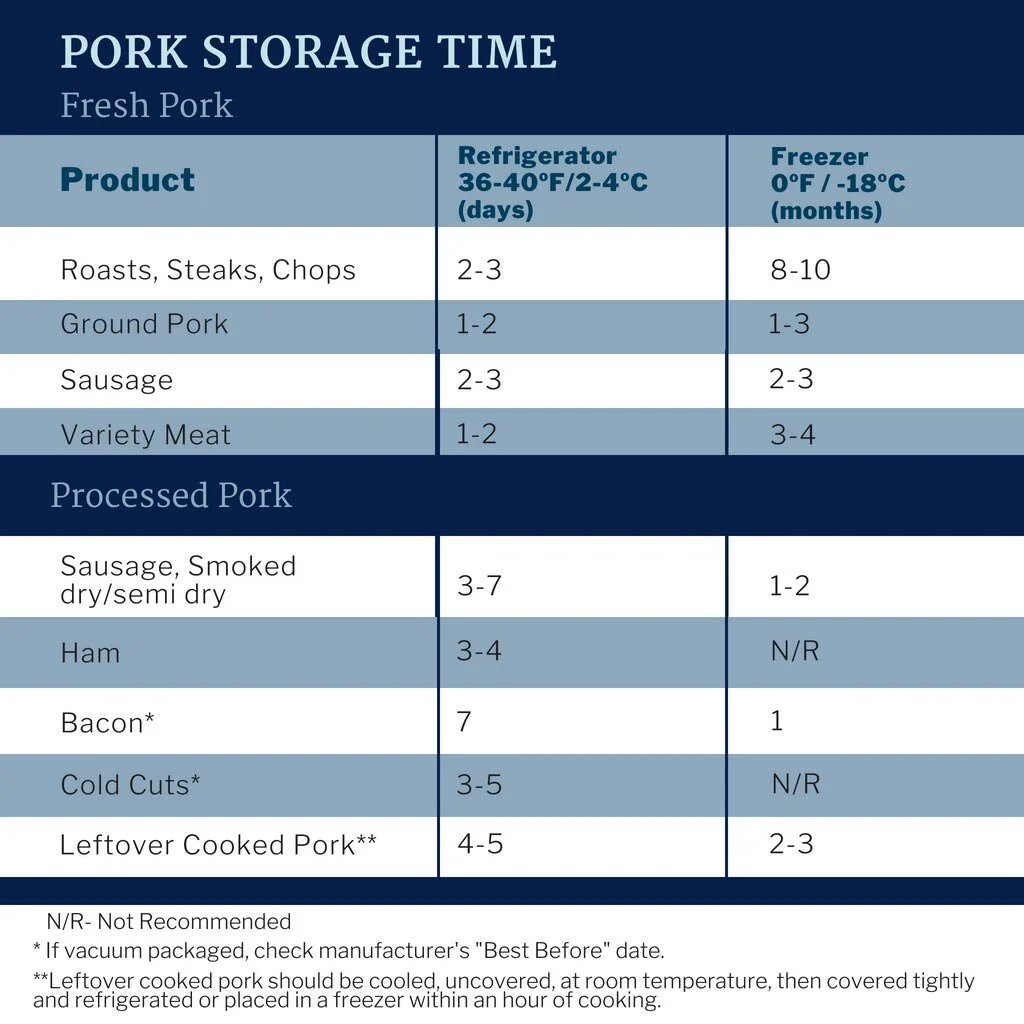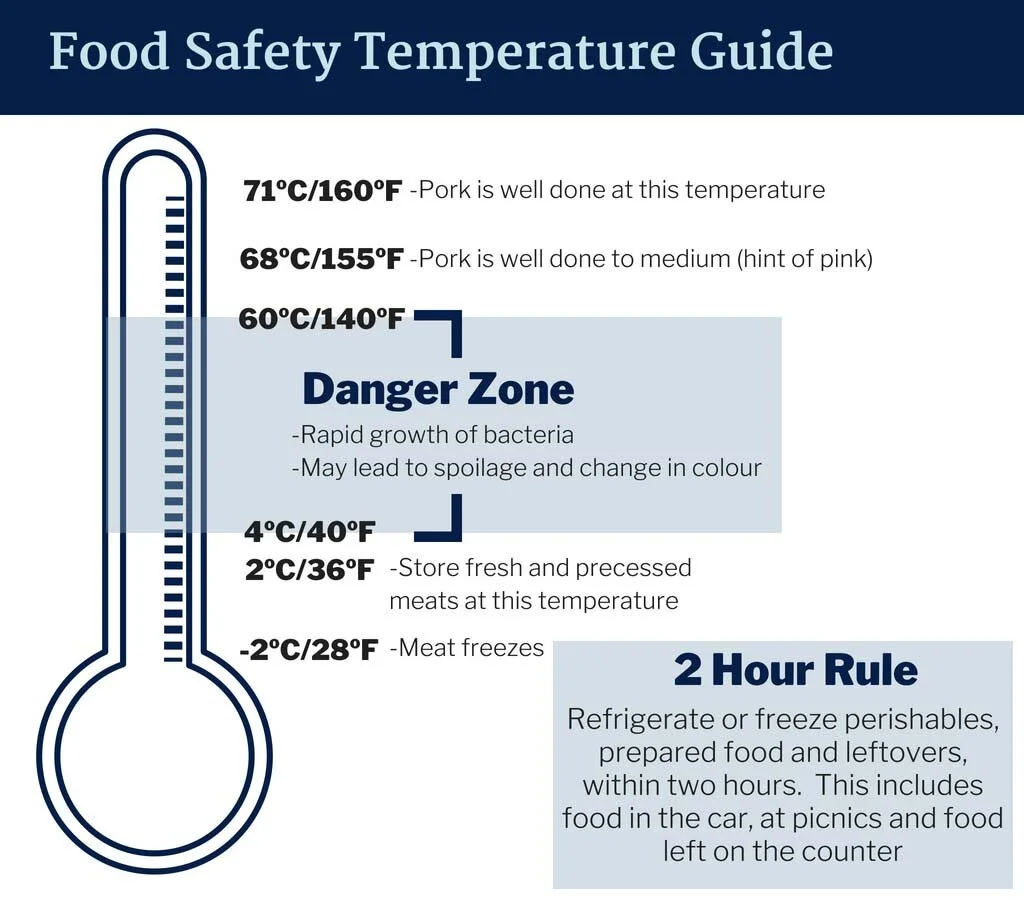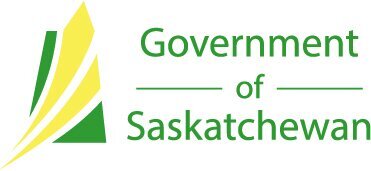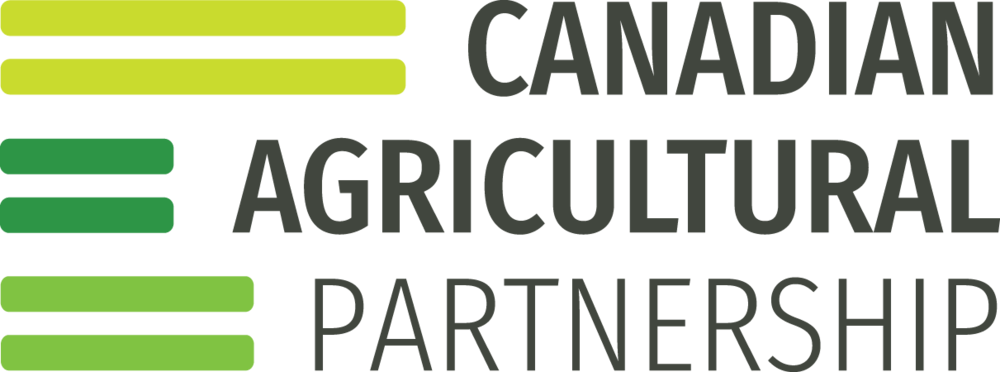Your Guide to Buying, Handling and Cooking Pork
There are several thing to consider when buying pork so that you will purchase the correct amount and cuts to meet your needs. Follow these tips and guidelines to help you purchase, cook, store and handle pork.
Buying Pork
How Much Pork do I Need to Buy?
The amount of pork you buy depends on how many servings you need and whether it is bone-in or boneless. A good rule of thumb is to allow 1/4-1/3 lb (125-160g) per person for boneless cuts and 1/3-1/2 lb (170-250g) for bone-in. For side or back ribs, allow 1/2-1 lb (250-500 g) per serving.
What is the Average Serving Size of Pork?
According to Health Canada, the average serving size for pork is 100 g (3 oz) of cooked meat (about the size of a deck of cards or the palm of your hand). Start with 150 g (4 oz) of boneless, raw pork to yield an average serving size of cooked pork.
Characteristics of Pork Cuts
Pork cuts come from four main areas: Loin, Leg, Shoulder and Belly. A variety of cuts are derived from each area. There are also some Specialty Cuts, in addition to the traditional pork roasts, chops and ribs, these include pre-breaded schnitzels, cutlets, cubes, strips and stuffed roasts are becoming more popular.
Knowing the characteristics of each cut allows you to choose the perfect way to prepare it. Check out our Canadian Fresh Pork Cut Chart to learn more about the various cuts.
Loin
Characteristics: This is the most tender and lean and yields the premium-priced pork cuts. It is divided in three sections: the rib (closest to the shoulder); the centre; and sirloin.
Cuts: Roasts, chops, cutlets, tenderloin, back ribs, cubes and strips. Usually cooked by dry heat method.
Leg
Characteristics: Leg cuts are very lean and more economical than the loin. The leg may be sold as a whole roast, or a half. It may also be sectioned into three muscle cuts: the inside; outside; and leg tip.
Cuts: Roasts and chops. Can be cooked by dry heat method, but best suited to moist heat methods such as slow cooker, braising and stewing.
Shoulder
Characteristics: The most economical of all retail pork cuts. Divided into two sections: picnic and blade. May be boneless or bone-in.
Cuts: Roasts, chops, steaks, cubes or ground pork. Best cooked using moist heat method; can also be used using dry heat.
Belly
Characteristics: The belly is the source of side ribs, bacon and very flavourful and meaty processed pork products (wieners, deli meats).
Cuts: Ribs and bacon.
Cooking Pork
Pork’s mild flavour makes it perfect for pairing with different flavour profiles. From zesty barbecue, Italian, Asian or wonderful fragrant curries, pork is a perfect choice! Just remember to cook pork low and slow. Overcooking and cooking at high temperatures will result in a dry, rather tasteless end product. The leanness of today’s pork means there is less fat to render in the meat itself. Cook pork to an internal temperature of 160°F (71°C). Your choice of cooking method depends on the cut, personal preference and time available.
Dry Heat Cooking Methods
Roasting is suitable for larger cuts. The meat is cooked uncovered on a rack in a roasting pan. For best results, cook in a pre-heated oven at a temperature of 325°F (160°C); the tenderloin can be cooked at 375°F (190°C). To check doneness, insert a food thermometer into the centre or thickest part of the roast away from fat or bone. Remember to allow for a 5°F (3°C) rise in temperature after removal from the oven, cook shoulder roasts to an internal temperature of 175°F (80°C), leg and loin roasts to 160°F (71°C). Cover loosely with foil and let stand 10–15 minutes before carving. All ground meat, including sausages, must be cooked to 160°F (71°C).
Broiling is suitable for smaller cuts. Place pork on a rack in a broiler pan or shallow baking pan 3” to 5” (7.5 cm to 12.5 cm) from heat. Broil until pork is brown on one side, turn and broil other side until done. Season each side after browning.
Pan Frying requires adding oil to a skillet and cooking at high heat until the surface is golden brown. Reduce heat to medium and cook until meat reaches an internal temperature of 160°F (71°C). Use a non-stick skillet to reduce or eliminate added oil.
Stir-Frying is a form of pan frying. Food is cooked in a wok or skillet over very high heat with very little oil. Simply toss ingredients rapidly with a spatula.
Grilling is an excellent, low fat cooking method. Whether grilling steaks, chops, ribs or roasts, pork will always be moist as long as it is not overcooked. Pre-heat barbecue to high and then reduce to medium. Use tongs, not a fork, to turn meat to avoid losing precious juices. When brushing on sauce, do so in the final 10-15 minutes to eliminate are-ups and to prevent sauces containing sugar from caramelizing and burning.
Moist Heat Cooking Methods
Braising is used most often for shoulder and leg cuts. Use a small amount of liquid. Simmer, covered, over low heat or in a 325°F (160°C) oven. Additional liquid may be added during cooking. Meat is ready when tender and easily pierced with a fork.
Stewing is used for smaller pieces of pork. The meat is seared over very high heat, then covered with liquid and simmered, over low heat on the stove top, or in an oven at 325°F (160°C) until the meat is tender.
These are guidelines only; for greater accuracy use a food thermometer whenever possible.
Storage and Handling Pork
The Canadian pork industry is committed to producing the highest quality, safe pork products for you. The Canadian Quality Assurance® On-Farm Food Safety Program was implemented to provide assurance the pork industry is doing everything possible to produce top quality and safe pork. Consumers must also handle food properly to reduce the risk of foodborne illness.
Storage Tip
The following are some handy tips for the proper storage of fresh pork. Keep in mind that these are general guidelines; always read the label and check “packaged on” or “best before” dates. If properly stored, pork can be easily frozen for later use and then defrosted in the refrigerator or microwave. Meat defrosted in the microwave should be cooked immediately.
Pork cuts wrapped in plastic can be frozen as purchased for up to two weeks.
For prolonged frozen storage use moisture-proof, airtight packaging to prevent moisture loss and freezer burn; label and date packages.
Remove as much air as possible from freezer bags before sealing.
Cover sharp bones with extra protection before wrapping so that the bones don’t poke a hole through the package.
Freezer burn is caused by loss of moisture on the food surface. Freezer burned meat has a dry, discoloured surface, and when cooked, is tough and tasteless.
It is not recommended to freeze processed products such as ham.
The “Three C’s” for Meat Handling
Keep it CLEAN
Keep it COLD
Keep it COVERED
When in doubt, throw it out! If you discover something in the refrigerator that you have forgotten about, don’t taste it! If any meat looks or smells suspicious, throw it out!

